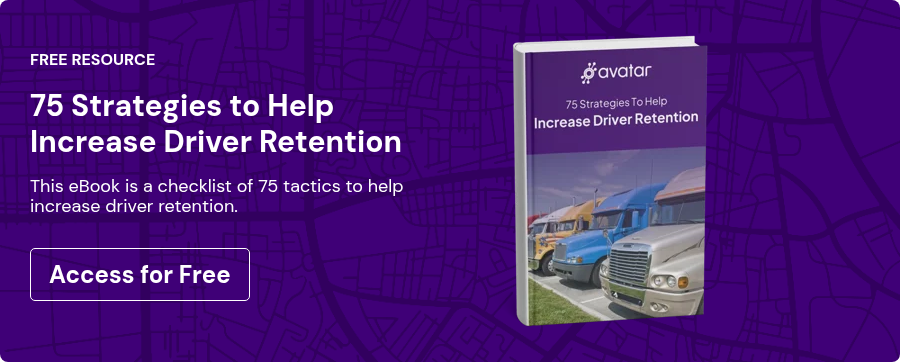![]()
Between advertising, recruiting, on-boarding, and training, it costs you thousands of dollars to hire just one driver. So it hurts all the more to see a driver turn around and walk out your door weeks, sometimes days after they’re hired. Rampant turnover plagues companies throughout the entire transportation industry. It’s the reason that the driver problem in America exists today. The solution is not to increase your recruiting efforts. That’s like fixing a leak by turning the water on. That’s not to say hiring practices aren’t valuable, but spending a little more time and resources on retention will have a bigger impact on your operations.
Improving your retention might seem like a pipe-dream, but there are companies out there achieving it, and they’re reaping the rewards. Companies with solid driver retention run smoother operations. They save time and money otherwise spent on hiring. Perhaps best of all, they’re safer; drivers are most likely to have an accident in their first 90 days with a company, whether they’re new to the industry or not. There are dozens of things you could do to improve your driver retention. We propose three simple changes that you can start on today:
- Utilize driver alignment forms
- Develop a driver check-in schedule
- Implement regular messaging/scoring
Driver Alignment Form
Drivers often quit when their expectations aren’t met. There’s often a moment of pointing fingers saying “The dispatcher promised me better loads or routes,” or “The recruiter said I’d be treated fairly.” When you meet your drivers’ expectations, you’ll be more likely to keep them on board. However, you can’t meet their expectations if you don’t know their expectations in the first place. That’s where driver alignment forms come into play.
A driver alignment form is a document drafted between a dispatcher/manager and a new driver upon hire. The document details mutual expectations and commitments to each other. Both parties should sign it, but it’s not a contract. It should say so right on the document. It’s merely a guide for how drivers and dispatchers/managers should behave with one another. Take it a step further and give your drivers a “golden ticket” that acts as an all-access pass to bring up concerns to you. That way, if you fall short of the expectations on the alignment form, and you will, you have an avenue for conflict resolution. This means your drivers will go to you with their problems rather than Indeed.
Driver Check-In Schedule
Driving is a solitary and, truth be told, often lonely profession. It can attract people with the a lone-wolf personality as a result. Even so, every human wants to feel as though they are a part of the team. The fact is, drivers are more likely to stay on-board when company leadership builds rapport with them. We recommend creating a check-in schedule for every new driver in order to easily attain this goal. Here’s an example of what a check-in schedule could look like:
- Day 1: Agree and Sign Driver Alignment Form
- Day 3: CEO thank you and check-in call
- Day 5: Payroll first week recap
- Day 9: Recruiter Check-In to make sure their promises are being kept
- Day 14: Safety Driver Score-Card Review
A driver check-in schedule creates a standardized, easy-to-follow approach to making your drivers feel appreciated. They’d have a harder time wanting to leave you and join the other guy because they feel as though they have a voice at your table. Why leave when you have support from your team and you feel like you belong with the tribe?
Regular Messaging and Scoring
If a company is to improve its driver retention, the decision needs to start at the top. However, retention goals and strategies must make it to the field for the needle to budge. A creative way to do this is with a custom-branded website/intranet for quick communication between leadership and managers. The portal could host weekly or bi-weekly video messages from the president or other leadership members speaking directly to managers on the importance of retention. The portal could also feature a monthly scoreboard of retention numbers by location or dispatcher. That would incentivize some friendly competition throughout the company. The end result is buy-in from the field on retention strategies.
Improve Retention and Stop Renting Drivers
When companies have high turnover and poor retention, they aren’t really hiring drivers; they’re renting them. If you want your drivers to stick around, you need to make some changes. The three strategies we shared here are some quick wins that will be a big impact. Put these into place today to stop renting drivers and start hiring them for the long-haul.
Sign up for our newsletter
Get the latest articles on all things transportation delivered straight to your inbox.
Schedule a live demo

